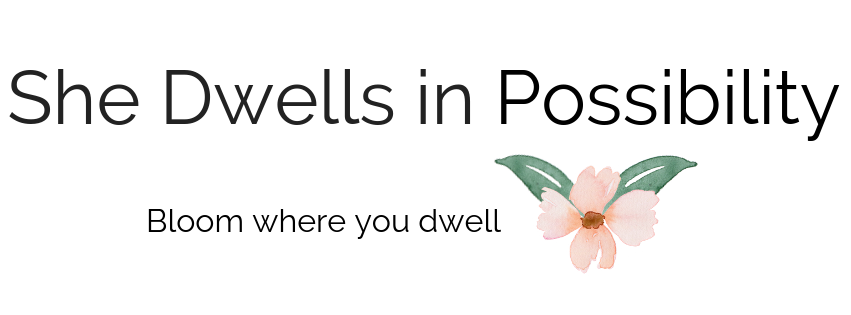When I went to college, I joined a sorority. People who know me now are often surprised by this. “You don’t seem like the type,” they say. (The idea of a sorority “type” is overgeneralized, but that’s a topic for another day.) The reasons why I joined a sorority are too complex to get into here, but it’s not something I regret–in spite of the fact that I really wasn’t a good match for sorority life. That has more to do with being an introvert than being anything else.
Still, I did learn a lot of important skills from that experience. One of them was how to make small talk. Sorority life is inherently social, and many social events required making small talk with strangers. Fortunately, my sorority experience began with the assumption that making small talk was a skill–not one we’re born with, but one we can learn.
Today I’m going to reduce the catalog of small talk skills to a handful of key moves. Knowing these strategies makes me feel more confident when I’m in a social situation, which allows me to make others feel more comfortable as well.
The Introduction
Let’s say you’re talking with someone you know pretty well. We’ll call her Susan. Another person joins the two of you. We’ll call her Jane.
If you know Jane, welcome her. Ask if she knows Susan. If not, your introduction goes something like this: “Jane, this is Susan Bailey. She works in our marketing office at the university. Susan, this is Jane Bishop. Jane’s an attorney who teaches classes in immigration law.” (At this point, the two will probably greet each other. They might even start their own conversation, if you’re lucky.)
If you don’t know Jane, welcome her by offering your name and a small piece of pertinent information–how you know the host, which department you work in, or something like that. Then introduce Jane to Susan, just as you would in the example above (unless Jane obviously knows Susan, of course.)
The Recap
There’s nothing more awkward (or difficult to recover from) than a long pause–especially one that follows a new person’s arrival. The easiest way to keep a conversation going when someone new joins in is with a brief recap. Something like this: “Susan and I were just talking about the fact that enrollment numbers are falling at colleges across the country. Have you noticed the same trend in law schools?”
The Question
You’ll note that The Question already made an appearance, after The Recap–it’s a direct invitation to join the discussion. It’s also the single most useful item in your small talk tool kit, because it gets other people to do all the work. (When someone asks me a question, I’m actually relieved–now I don’t have to come up with a topic I hope they’ll find interesting. It’s already been handed to me.)
You don’t want your conversation partner to feel interrogated, so try to ask no more than two questions in a row. Follow up with a statement: “How do you know [host]? So were you an English major in college, too? That’s interesting–I have several friends who went on to law school after finishing English degrees.”
The Spatula
This is a useful strategy when someone asks a question you can’t answer: just flip the question right back at them. “Actually, I haven’t read anything about that in the news. Can you tell me more?” You can also use The Spatula to transition from an answer to a question: “I know Susan from our work together at the university. How do you know her?”
The Spatula also comes in handy when someone makes a comment that’s potentially offensive: “I’ve always thought X was true, but it sounds like you think Y is more accurate. Why is that?” The answer to this question will help you determine whether or not you want to continue the conversation. Which leads us to . . .
The Graceful Exit
Except for the long, awkward pause, there’s nothing worse than feeling like you’re stuck in a terrible conversation. But if you master The Graceful Exit, this will never happen to you again. It involves three basic steps.
Introduce your intention. “Do you know where the restroom is?” or “Looks like I need a refill” will do the trick.
Pause (briefly). The idea is simply to avoid looking like you’re desperate to get away. My usual strategy is to survey the room in search of . . . something. A path to freedom, perhaps.
Say your goodbyes. If there’s more than one person in your group, single out anyone you’ve met for the first time and treat the others as a group. “Jane, it was so nice to meet you. See you Monday, everybody.” If you’re speaking with a couple of people, say goodbye to each one individually. “Jane, it was so nice to meet you. See you Monday, Susan.”
I normally try not to leave people on their own at a social gathering, since being left to my own devices in a room full of people is the stuff of my nightmares. Still, there are moments when this is necessary–when you really do need to use the restroom, for instance. Or when continuing a conversation is going to make your head explode.
Even if small talk isn’t something you enjoy, treating it as a learned skill can make you feel more prepared to take it on when and if the need arises.





11 Comments
Helpful post! The graceful exit is definitely a good skill to have. Excellent advice.
Loved this post…I’m terrible at the graceful exit. Good at exiting, but not always doing it gracefully :\ Interesting topic to write on – I enjoyed this!
Great post, I work with many people who experience social phobia and this post will be extremely helpful for them.
I’m glad! Learning to think of small talk as a specific skill set I could master made it much less scary for me.
Hi Pam! This was a great post. Meeting new people for the first time can be very stressful for me, so I’m always trying to learn conversation strategies that will help me feel more at ease. Thanks for these tips! Now, I have a new game plan in mind. 🙂
I really think that’s the key to mastering small talk–having a game plan beforehand.
Great tips, thank you! I teach and often am caught having to small talk with students in the hallways. Sometimes it is easy and natural and sometimes it isn’t. Building those small talk skills is imperative!
I find myself in the same situation. Some students are easy to talk with, but others are really difficult (mostly because they’re inexperienced conversationalists–not to mention being intimidated by the student/teacher power dynamic.) Asking them lots of questions, giving them something to talk about, helps put everyone at ease.
I am pretty bad at small talk so I appreciate this post. I agree that the pause is always the worst part and I find myself usually being the one to fill it in with some questions!
That’s the easiest way to fill a gap. I find that the longer the pause goes on, the harder it is to fill. My brain just freezes up as I desperately search for a way to end the silence!
What helpful advice!!